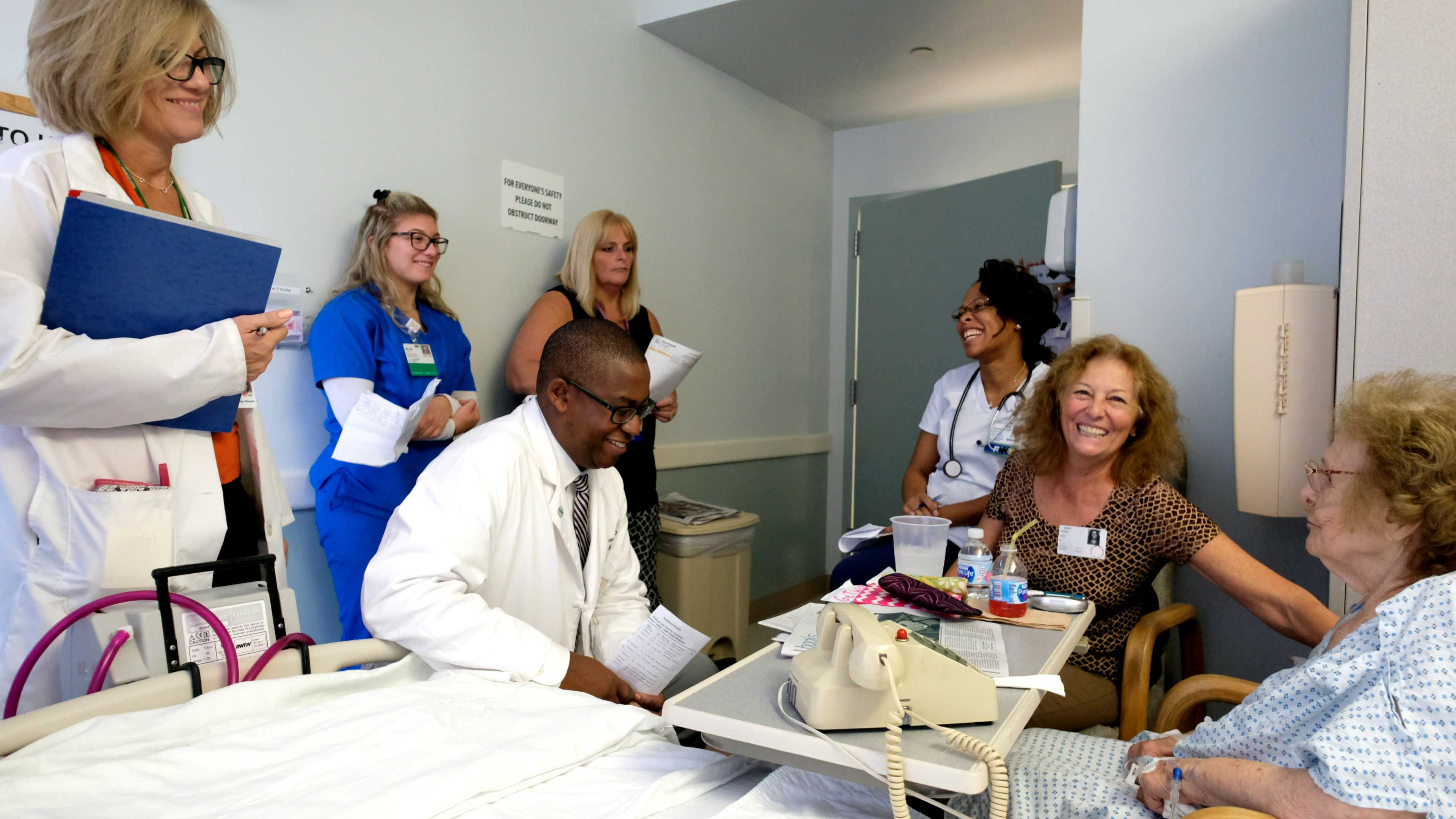Empowering Hospital Unit Teams: Strategies for Collaborative Length of Stay Reduction


Introduction
Within the complexity of modern hospitals, unit teams play a pivotal role in delivering patient care. Driven by hospital leadership's goal of reducing Length of Stay (LOS), hospital unit teams are at the forefront of implementing collaborative strategies for improved patient outcomes and streamlined operations. In this article, we explore practical approaches tailored for unit teams to foster teamwork, communication, and shared accountability in the pursuit of efficient LOS.
Interdisciplinary Bedside Rounds
Initiate regular interdisciplinary bedside rounds within the unit, involving nurses, physicians, therapists, support staff and patients & families. Discuss patient care plans, progress, and potential barriers to discharge specific to the unit's responsibilities. Engaging patients and their family in discharge and care conversations early and regularly will optimize decision making about discharge options. One study showed a significant increase in nursing home placements for aged care patients after implementation of SIBR rounds, with the authors commenting "SIBR may encourage patients and families to make decisions on placement earlier than they would have otherwise."
Dedicated Unit-Based Care Coordinators
Designate unit-based care coordinators responsible for managing patient transitions. Collaborate with colleagues to address non-clinical needs affecting discharge and enhance patient-centered care. Afternoon discharge huddles that focus on the next day's potential and definite discharges can reduce delays when the time arrives - no more missing scripts, last minute recognition of DME or care packages etc.
Clarify Unit Roles and Responsibilities
Clearly define the roles and responsibilities of each team member within the unit context for effective LOS reduction. Foster a collective understanding of unit-specific contributions to efficient and effective patient care and the mechanisms in which these contributions are to be shared forward, e.g. during interdisciplinary rounds with family, or updates during afternoon discharge huddles.
Unit-Specific Meetings
Organize regular unit meetings to review LOS data, share insights, and collectively address challenges. Involve frontline staff in data reviews, so they can understand how the unit is performing, what improvements are needed and participate in the decision making process. Identify opportunities for improvement and develop unit-specific action plans during these collaborative sessions. This will enhance team culture and staff engagement when the changes are being implemented.
Customized Training and Education
Provide specialized training on LOS reduction strategies and best practices relevant to the unit's patient population. Ensure unit team members are well-versed in unit-specific protocols for streamlined care and discharge processes. Empower units to find solutions that optimize resource utilization while aligning with hospital goals and resources.
Utilize Unit-Specific Technology
Implement technology solutions tailored to the unit's needs. Leverage data analytics tools to identify unit-specific patterns and areas for improvement in LOS. Seek support from hospital quality and data specialists as needed to support the work.
Unit-Based Patient and Family Engagement
Involve patients and their families in the unit's care planning process, fostering active participation. Patient-centered interdisciplinary bedside rounds have been shown to improve length of stay and top-box patient survey responses. Educate patients about their role in facilitating discharge. Ensure that patients are assigned tasks & opportunities to improve their length of stay, from deciding early on the preferred discharge destinations, to completing therapy tasks to prevent functional decline.
Unit-Specific Performance Metrics and Accountability
Establish performance metrics related to LOS reduction specific to the unit and regularly assess team performance. Simple examples that can be completed by frontline unit staff with minimal input from other supporting departments include the use of whiteboards to track the estimated date of discharge and/or barriers to discharge to be resolved, tracking discharge note and pharmacist prescription completion times. Foster a sense of unit-specific accountability for contributions to achieving LOS reduction goals.
Unit-Level Continuous Quality Improvement (CQI)
Cultivate a culture of continuous improvement within the unit by encouraging feedback and learning from experiences. Focus on developing a unit-based spirit of learning and growth, who staff feel empowered to improve the delivery of care. Regularly reassess and refine unit-specific processes based on data and outcomes. Seek inputs from all frontline staff, not just the vocal minority. And remember staff have to fully commit to an intervention to know that it has not worked. Otherwise all you have proven is that a half-hearted effort at an intervention has not been successful.
Celebrate Unit Successes
Acknowledge and celebrate achievements and milestones in LOS reduction within the unit. Recognize the collective efforts of the unit team to reinforce a positive and collaborative culture.
Conclusion
As hospital unit teams embrace these strategies, they are poised to drive meaningful change in LOS reduction. By fostering teamwork, effective communication, and shared accountability within the unit, healthcare professionals can create a culture of efficiency and patient-centered care. Unit teams, equipped with the right tools and strategies, become catalysts for positive change, ensuring that the patient journey is characterized by optimal outcomes and a seamless transition from admission to discharge.
Keep Exploring Our Work



